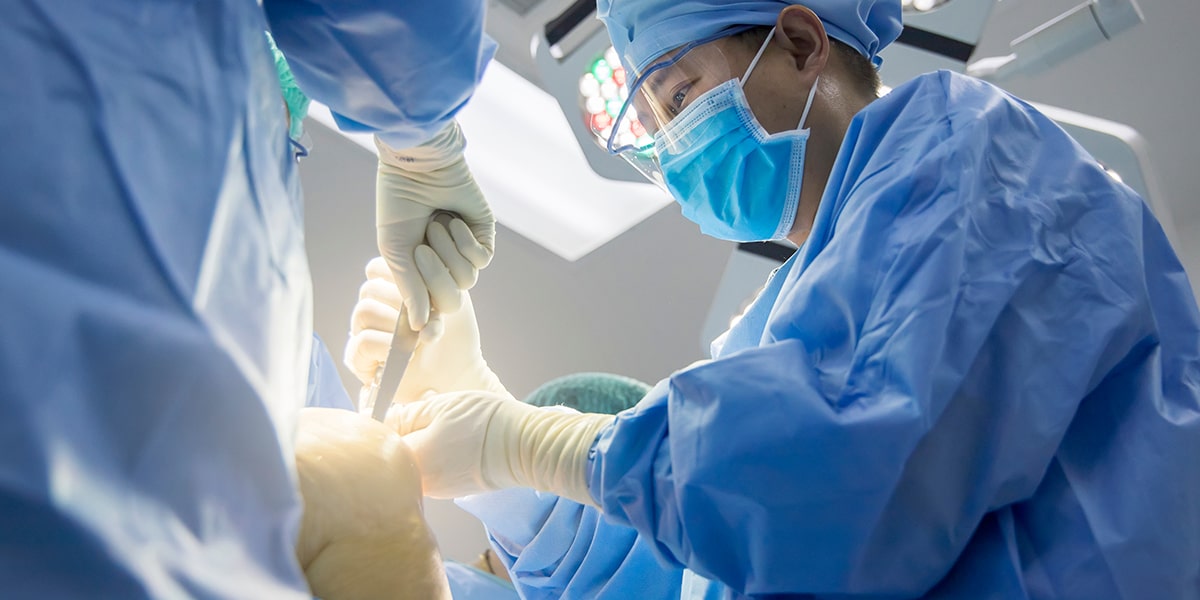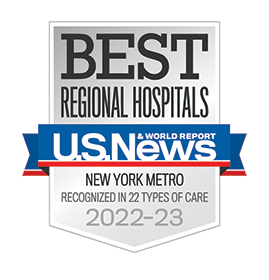Hackensack University Medical Center Experts Publish Review of Metaphyseal Cones and Sleeves in Revision Total Knee Replacement
JAAOS® Article Explores Approaches for Managing Bone Loss During Revision Total Knee Replacement
A comprehensive review article by orthopedic surgeons from Hackensack Meridian Hackensack University Medical Center and peers, “The Use of Metaphyseal Cones and Sleeves in Revision Total Knee Arthroplasty,” was published in JAAOS®, the Journal of the American Academy of Orthopaedic Surgeons. The article presents different design philosophies, types of manufacturing, clinical outcomes and the versatility and interchangeability of varying cones and sleeves with different total knee arthroplasty systems.
Metaphyseal cones and sleeves have emerged as an increasingly popular option of addressing metaphyseal femoral and tibial bone loss in rTKA. Understanding what cones and sleeves are available and when to use them is critical to preoperative evaluation and planning. The comprehensive review article includes a section on bone-loss classification, exploring various bone-defect classification systems primarily based on defect size, severity, and location that guide both surgical management and outcomes. It also provides a complete background on cones and sleeves and states that bone loss encountered during rTKA is a challenging problem because little consensus exists on optimal management. Bone grafts, metal augments, metaphyseal sleeves and, more recently, ultra-porous cones all have been reported as viable options.
A section of the article outlines the materials and manufacturing of metaphyseal cones and sleeves, explaining that ultra-porous metals offer a three-dimensional cellular metal structure with interconnected pores, and that ultra-porous metal exhibits lower but sufficient stiffness compared with solid metal. The article elaborates on other substances used for the cones and sleeves, including tantalum, tritanium, StikTite, InteGrip, 3DMetal and Porocoat.
In addition, the article includes a section on clinical outcomes, reporting that since initial short-term tantalum cone studies, several authors have reported continued success at midterm follow-up, and that most literature on the first-generation metaphyseal cones has reported survivorship of tibial cones with limited data on femoral cones.
The authors state that metaphyseal cones and sleeves are both viable and effective options for addressing femoral/tibial bone defects in rTKA, and that both techniques allow for appropriate bone defect management and metaphyseal bone fixation with comparable clinical and radiological results and survival rates. Michael Kelly, M.D., Chairman of the Department of Orthopedic Surgery at Hackensack University Medical Center and Professor and Chairman, Department of Orthopedic Surgery at Hackensack Meridian School of Medicine, co-authored the research along with Ahmed Siddiqi, D.O., MBA, lead author and an orthopedic surgeon at Jersey Shore University Medical Center in Neptune, NJ and assistant professor at Hackensack Meridian School of Medicine, Hackensack, NJ.
Learn More about orthopedic advancements at Hackensack University Medical Center.
